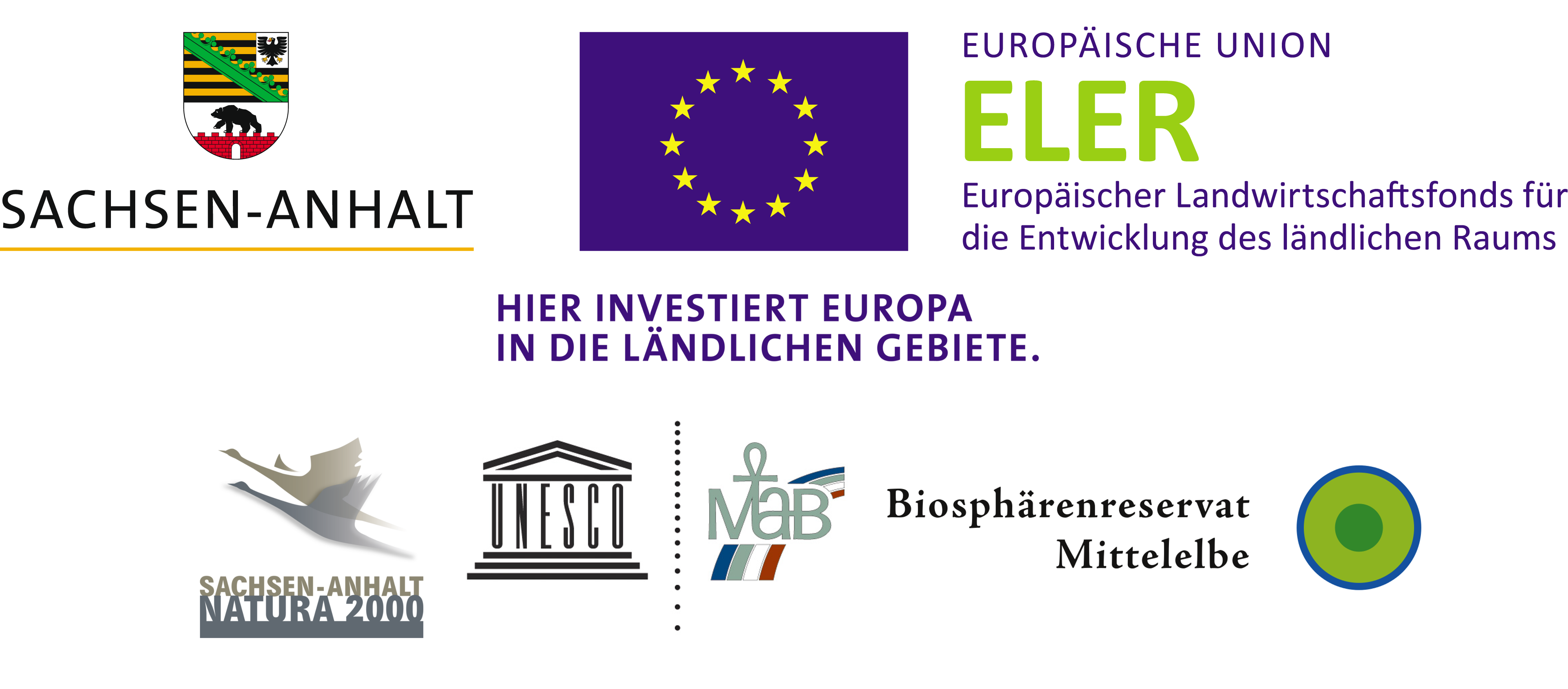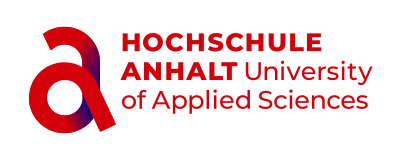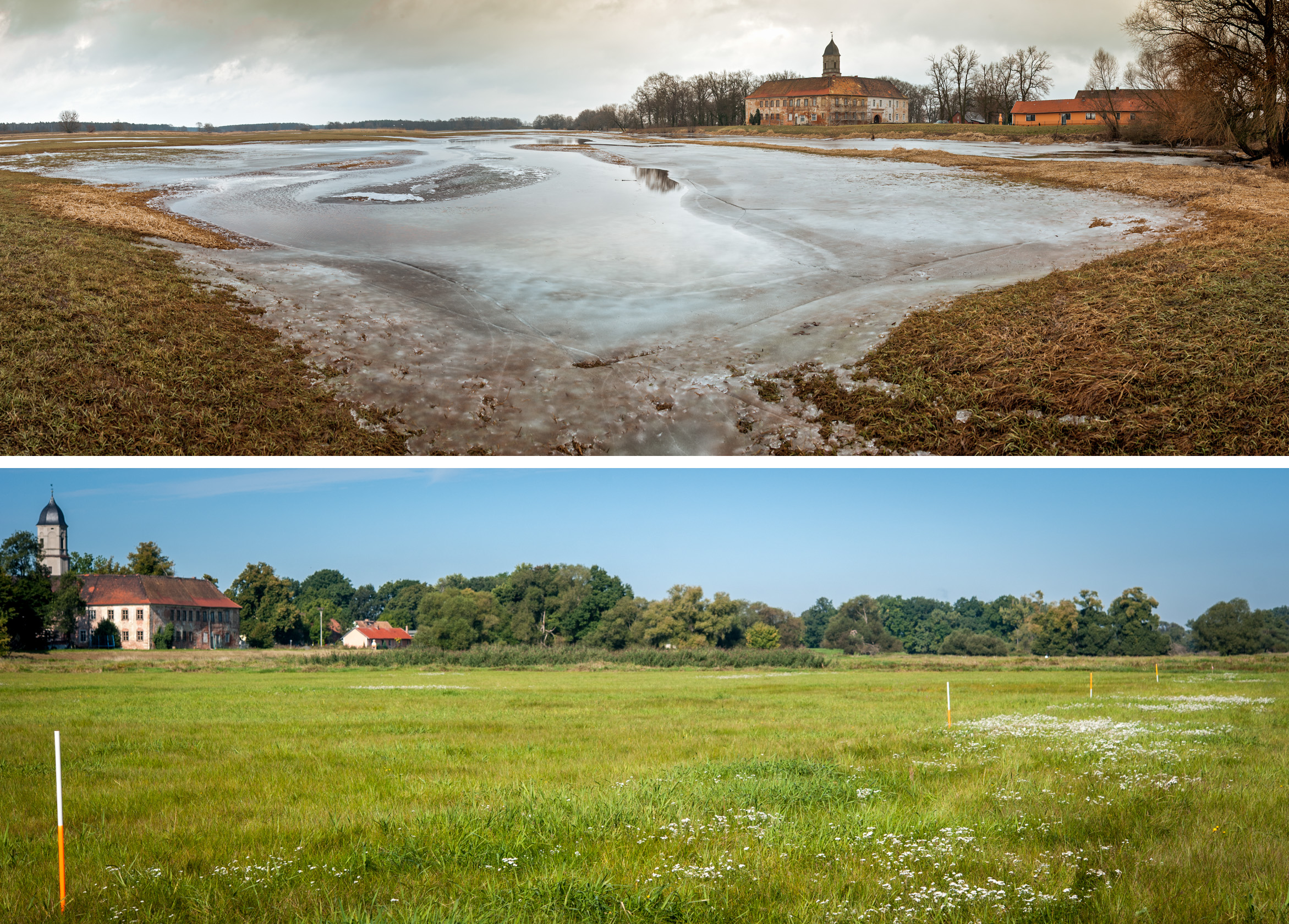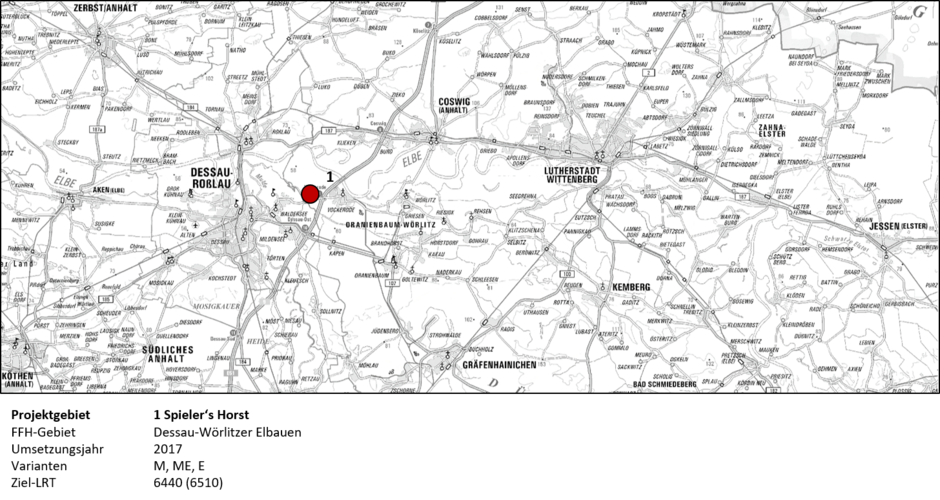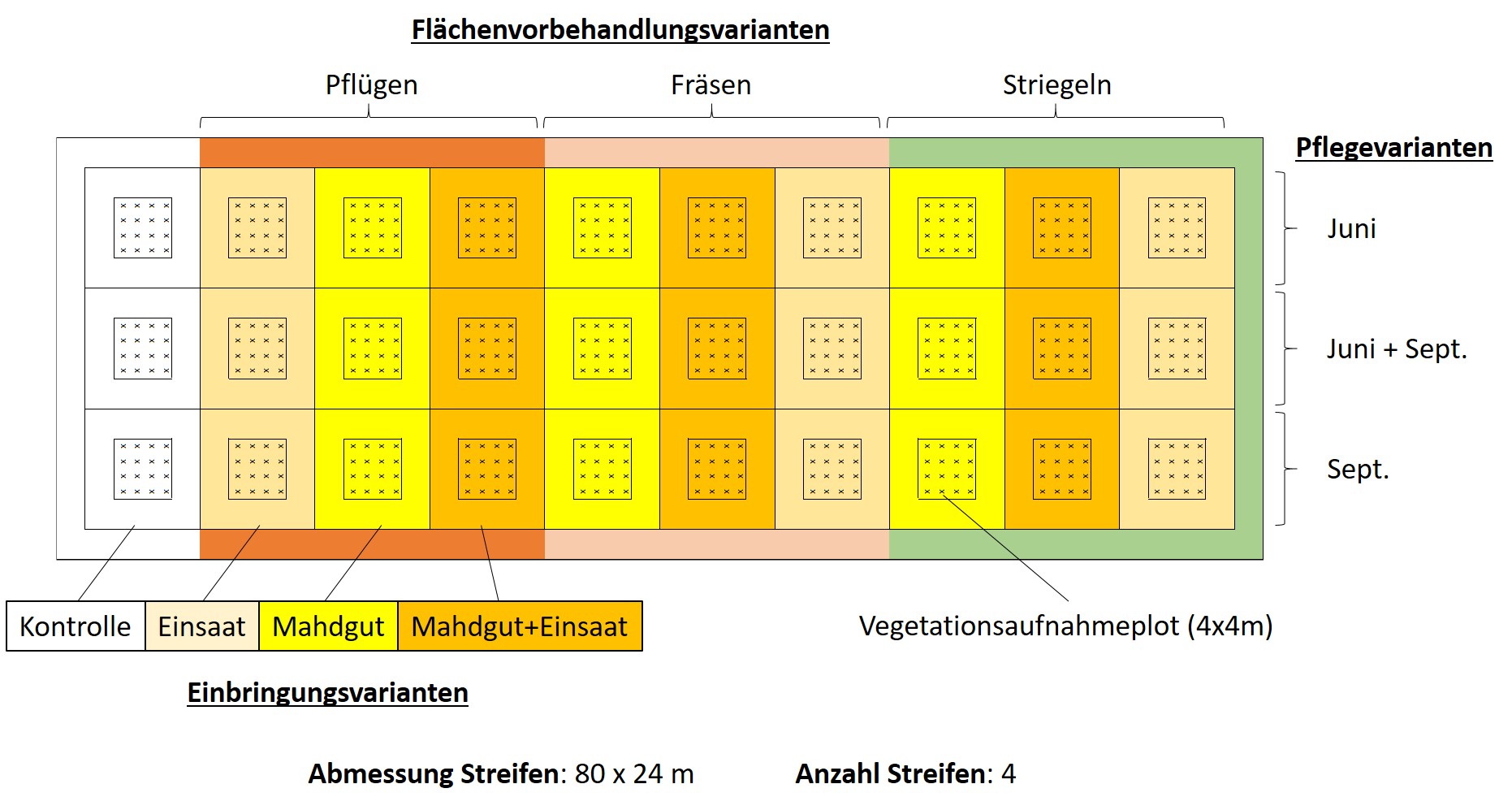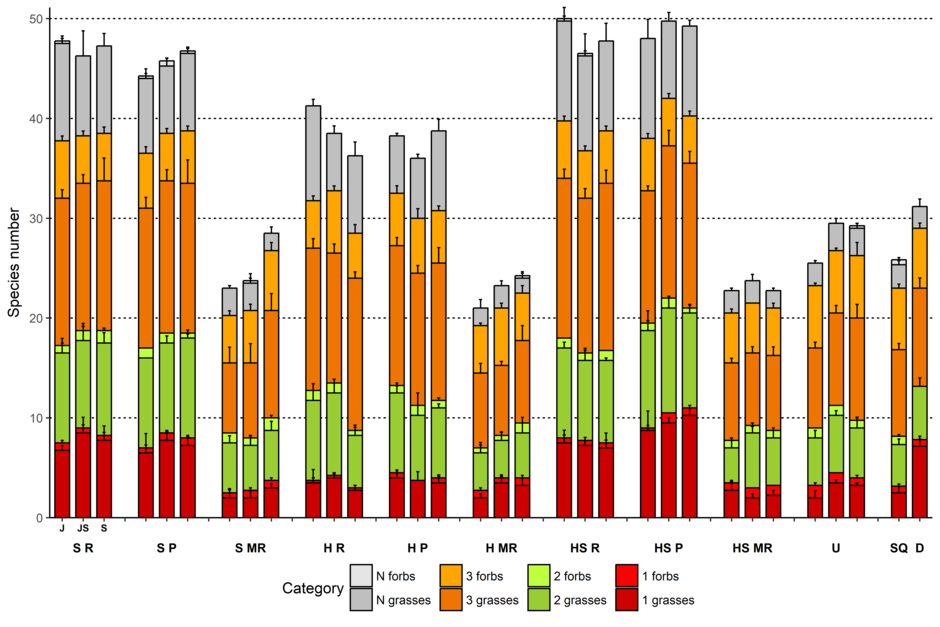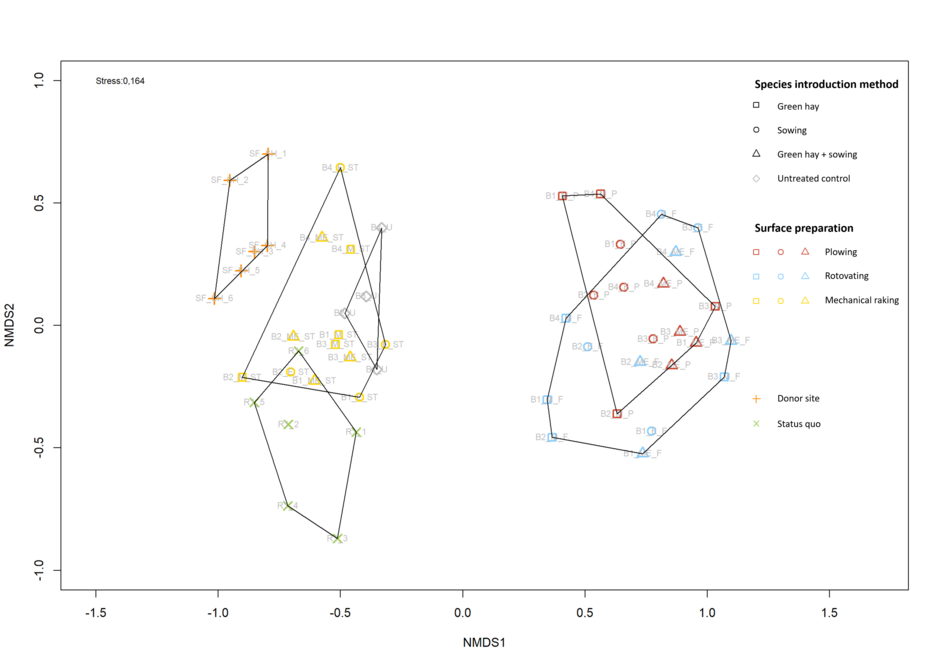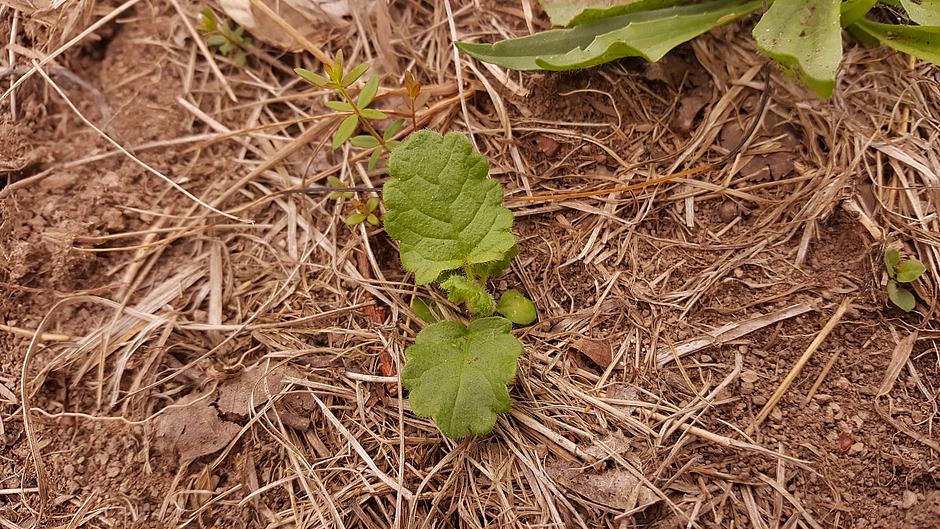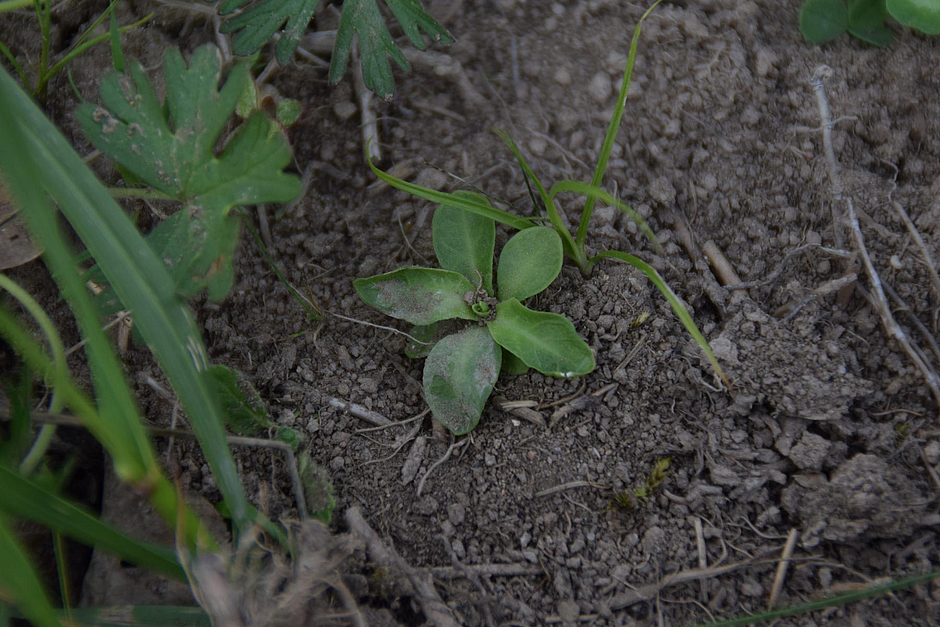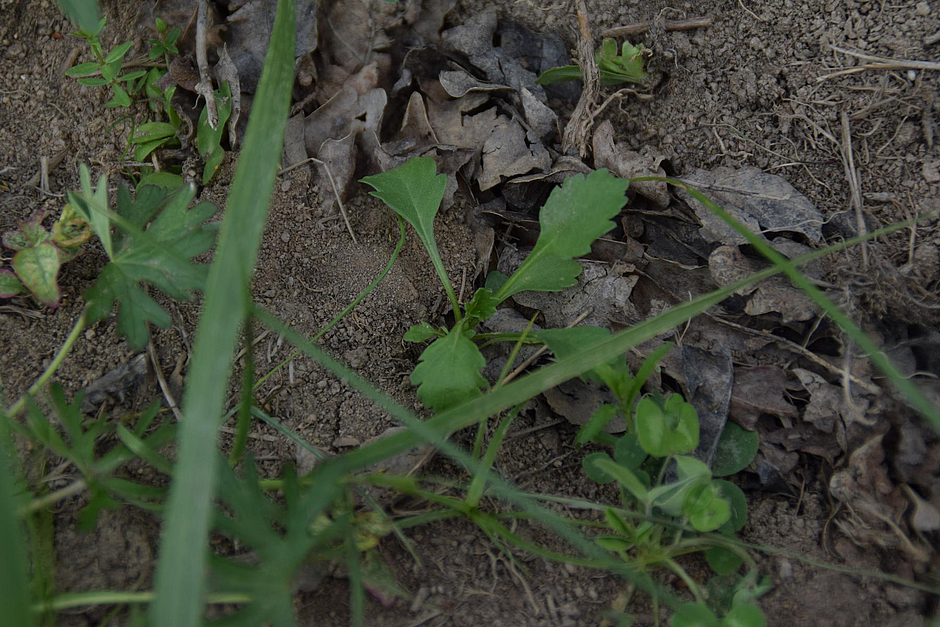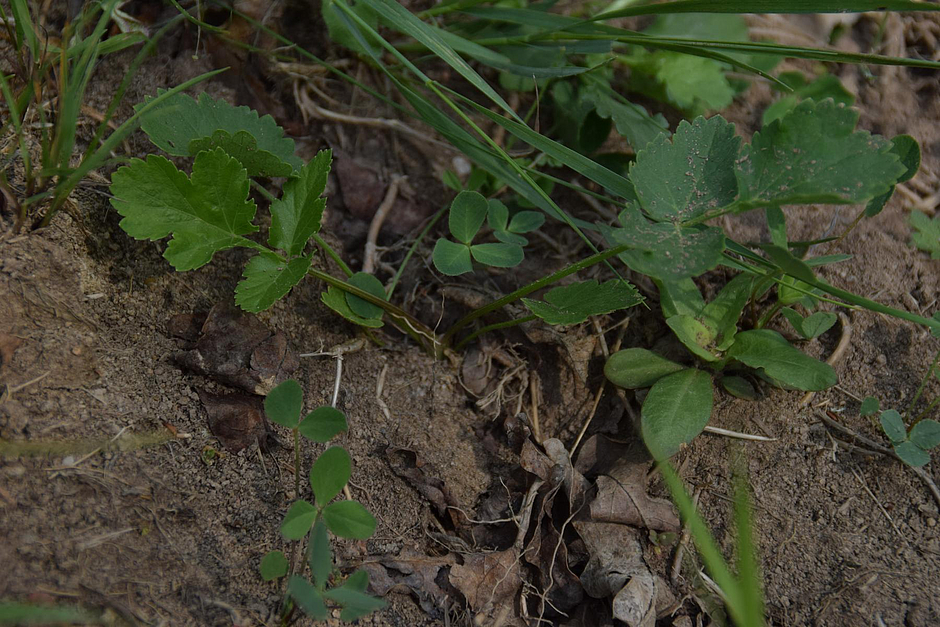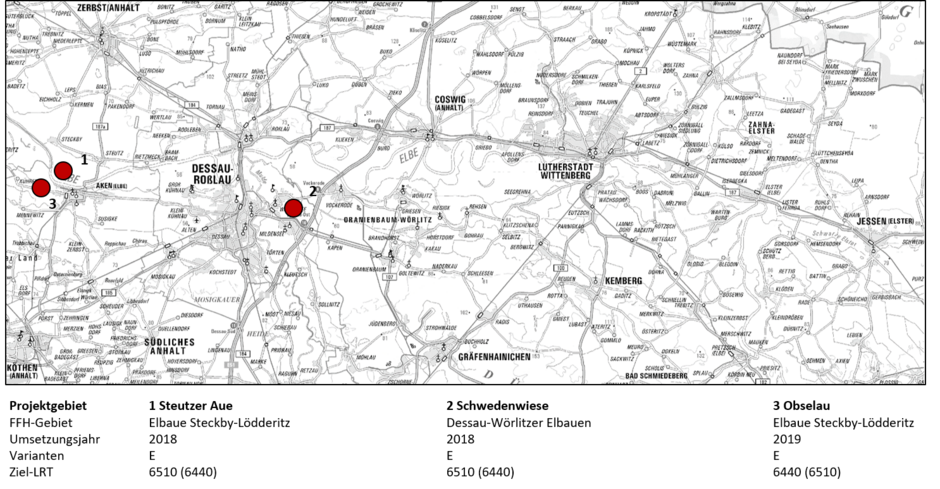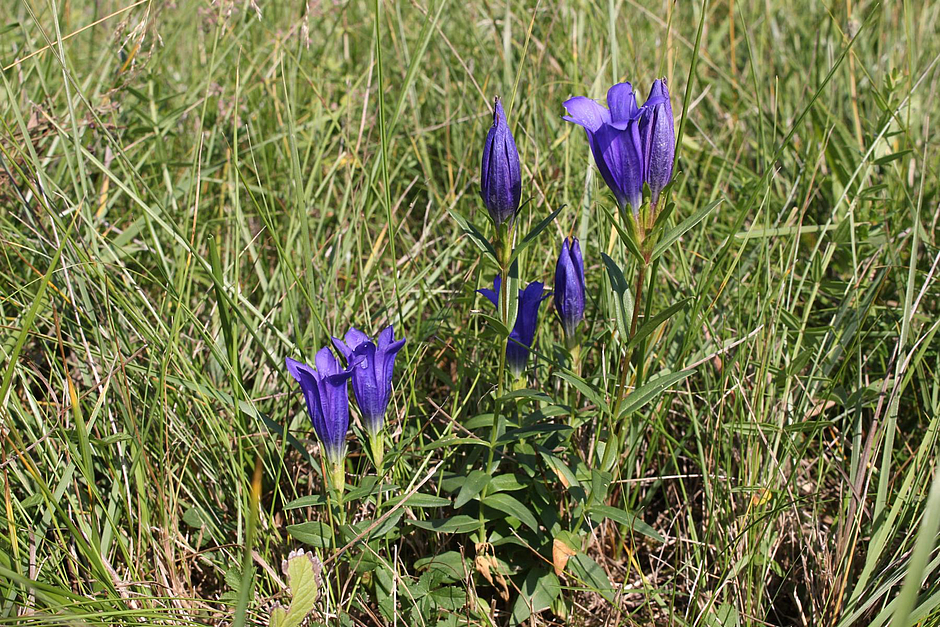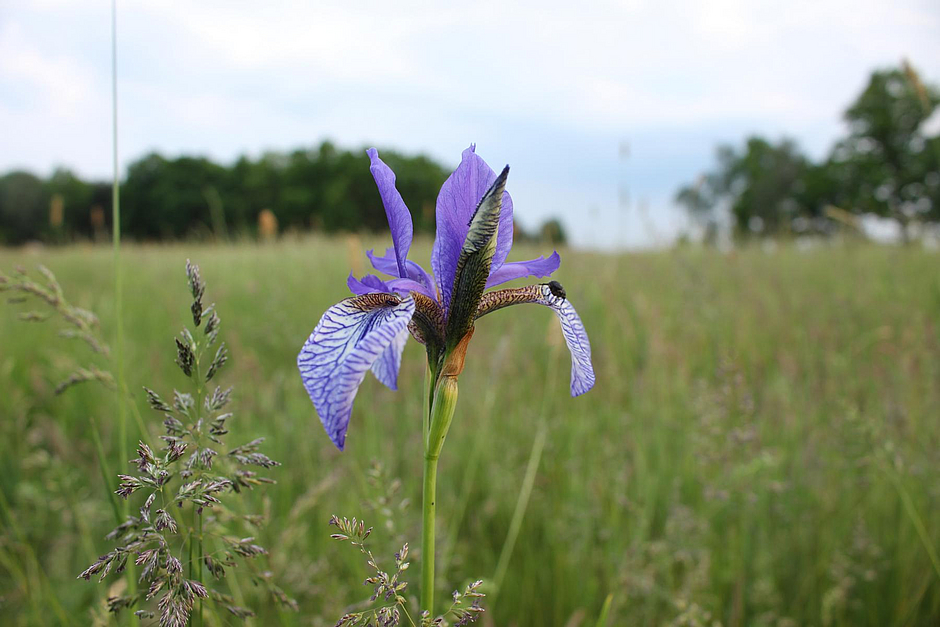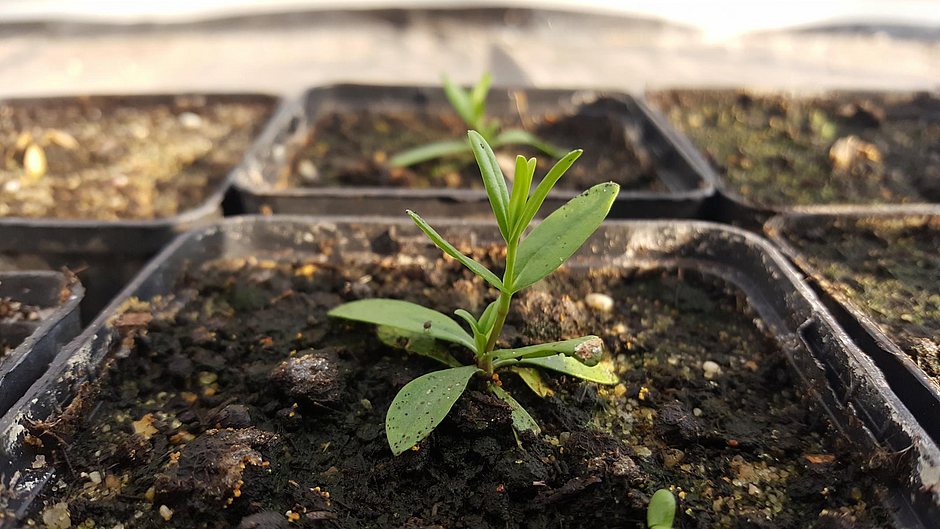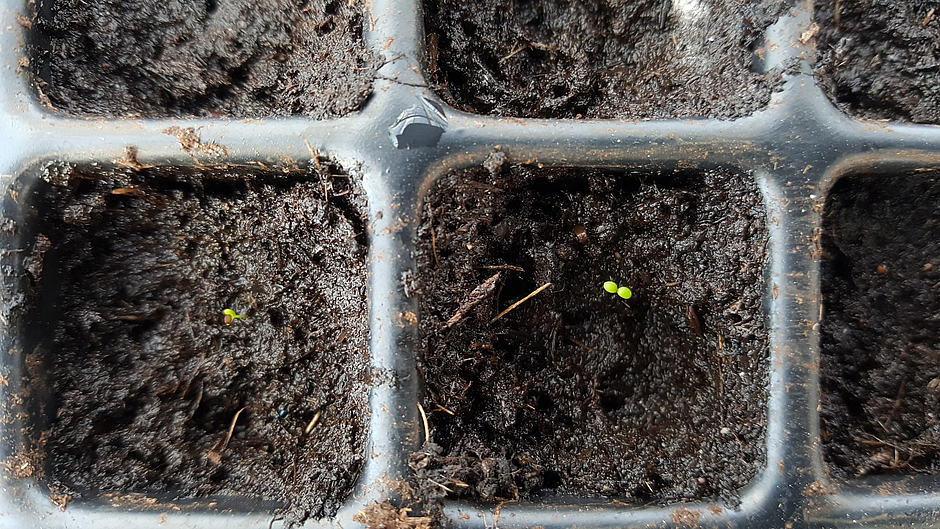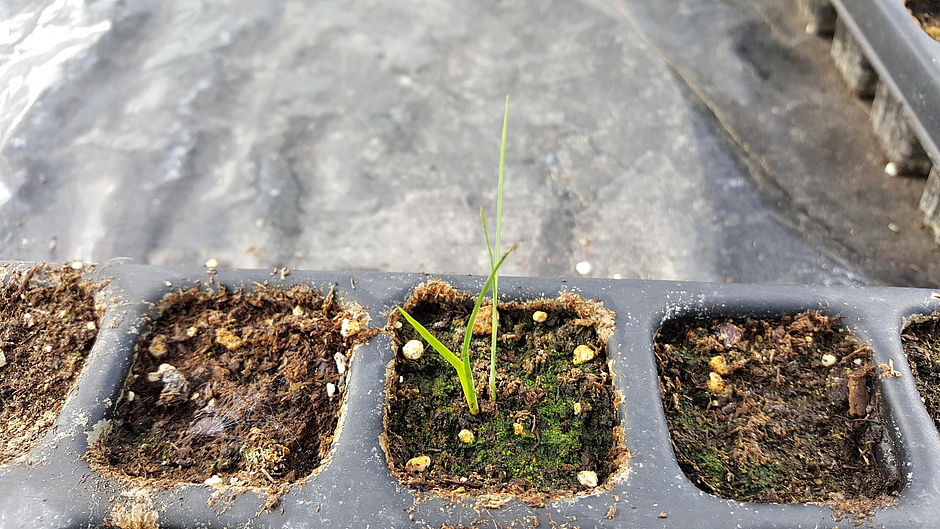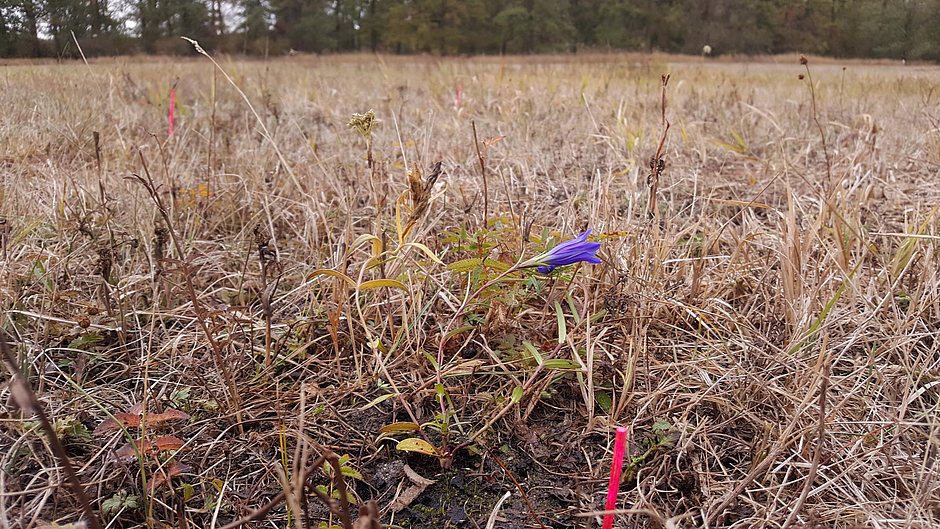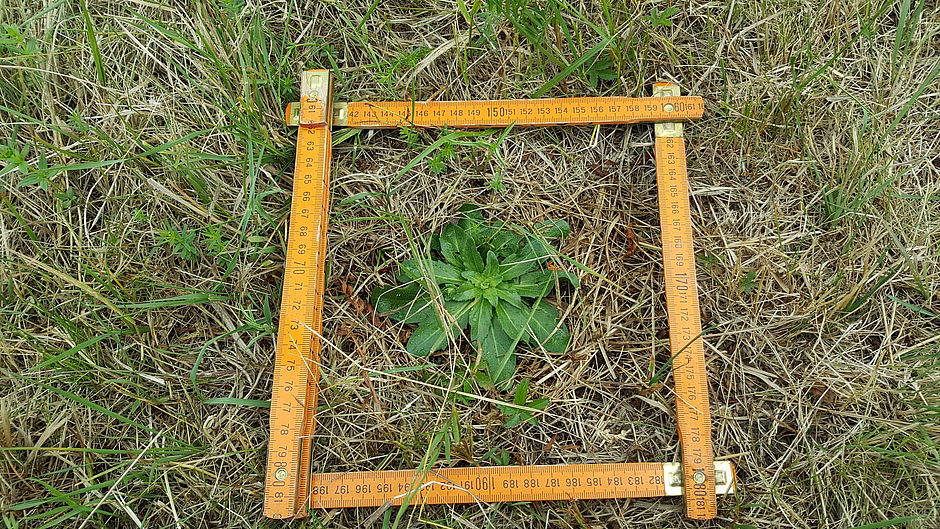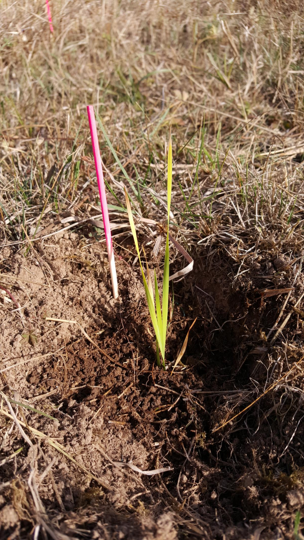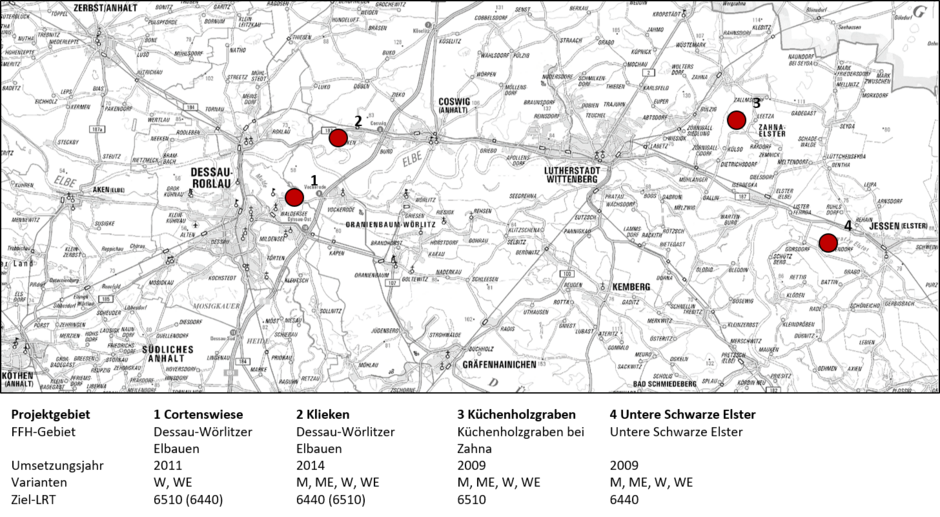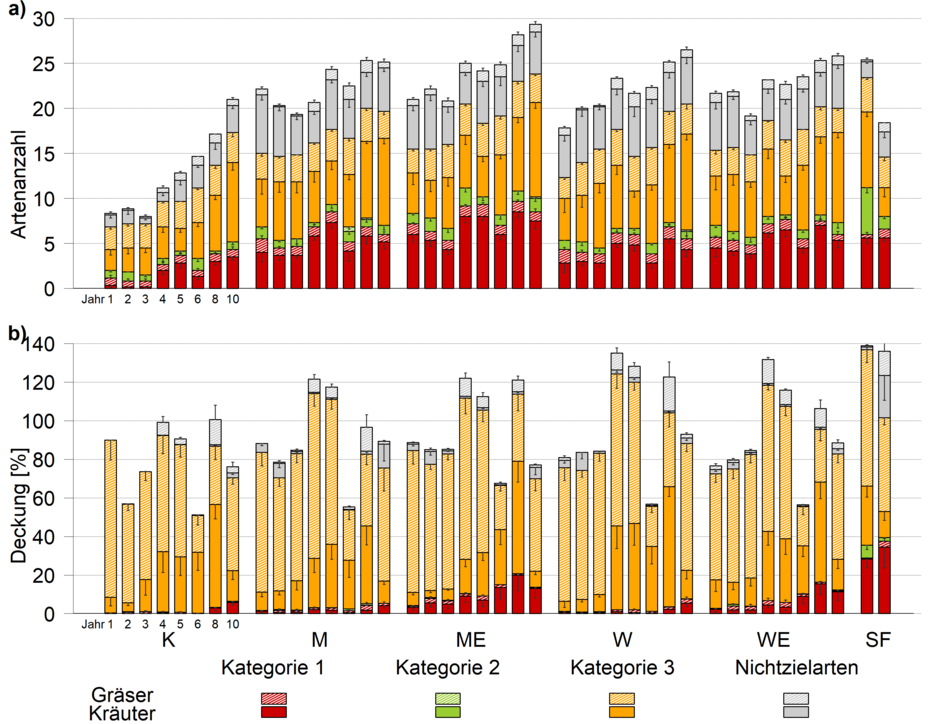Motivation and Aim
Motivation and Aim
Many grasslands located in Natura 2000 sites have been assessed as having an unfavourable conservation status. Even after years of appropriate management and although optimal site conditions prevail, they often still lack the typical species composition and diversity of semi-natural grasslands of high nature conservation value. Species-rich grasslands are rare and often fragmented. Thus, the lack of appropriate seed sources combined with the low potential for long-distance dispersal of many target species are two of the main reasons that hamper effective re-colonisation of species-poor grasslands. Furthermore, dense swards of dominant grasses can additionally hamper or almost inhibit the germination and establishment of newly arriving grassland species.
In this project, different methods for the introduction of target species have been and are still being tested in species-poor grasslands within Natura 2000 sites. Species-rich grasslands were selected as donor sites for harvesting seeds and seed-rich green hay. Using hay transfer and sowing of regional seed mixtures, we aim to restore the diversity and species composition of semi-natural grasslands within Natura 2000 sites.

Study site „Untere Schwarze Elster“ in winter 2012 and in summer 2015 (Photos: Ralf Schmiede) Key aspect 1 - Systematic trial for grassland restoration at the study site "Spieler's Horst"
Key aspect 1 - Systematic trial for grassland restoration at the study site "Spieler's Horst"
At the study site "Spieler´s Horst" near Vockerode, restoration measures were applied in autumn of 2017 to restore the floristic composition and diversity of species-poor grassland, based on a randomized block design, composed of four experimental strips (24 m x 80 m).
Three factors are tested:
a) surface preparation,
b) species introduction methods,
c) management.
Plowing, rotovating and mechanical raking were used as variants of surface preparation.
Plowing (with subsequent harrowing to level the structure of the soil and thus creating an optimal seedbed) represents with the profound turning of the sod, the strongest and presumably the most long-lasting disturbance of the existing grassland vegetation. Therefore, this method should be optimal to provide germination and establishment conditions for the introduced diaspores of the target species.
When rotovating, the mechanical disturbance reaches less deeply into the soil. In addition, the sward is not turned but the above-ground biomass as well as the subterranean rhizomes are shredded.
The third method mechanical rakingis a minimally invasive method, which was conducted to estimate, which plant species are able to establish themselves in the existing grassland sward.
We used three variants of species introduction in this planned design: transfer of seed-containing plant material applied by freshly cut hay, sowing of regional seed mixtures and a combination of these two variants. In addition, we set up a control variant with no introduction of diaspores.
The management of the experimental strips consists of three different mowing regimes:
a) Mowing in June,
b) Mowing in June and September,
c) Mowing in September.Monitoring
The success of the restoration measures is being scientifically evaluated in a monitoring program. We document the establishment of the species and compare rates between variants. For this purpose, vegetation surveys are carried out once a year using permanent plots (4 x 4 m). Furthermore, soil samples from both donor and receptor site are taken and analysed for nutrients (C, N, P, K) and pH.

Study site (H = green hay, HS = green hay + sowing, S = sowing). (© GeoBasis-DE / LVermGeo LSA) 
Schematic design of an establishment strip. Results of the first year

Vegetation dynamics at the study site „Spieler's Horst“ 2018. (Cat. 1 = Target species s. str., Cat. 2 = target species s. l., Cat. 3 = Common grassland species, N = Non-Target species), species introduction methods: S = sowing, H = green hay, HS = green hay + sowing, surface preparation: R = rotovating, P = plowing, MR = mechanical raking, management: J = June, JS = June + September, S = September, U = untreated control, SQ = Status quo, D = donor site. The number of species are shown (n = 4, 16 m²). 
NMDS ordination of the plot records connecting records of the same surface preparation. In addition, records of the same management were analysed together. Results of the first year
In the first year after implementation, differences in the number of category 1 target species were detected with regard to species introduction method and surface preparation.
In comparison to the untreated control (U), a higher number of category 1 target species was recorded on the sowing variants (S and HS), which were rotovated (R) or plowed (P). The differences between the more strongly disturbed variants on the one hand (R and P) and the minimum disturbance intensity (MR) on the other hand were also evident in the NMDS ordination. The mechanical raking variants differ only marginally from the untreated control or the resident vegetation. According to a multivariate Anova, the species introduction variants (F3 = 1.75, P = 0.029) and the surface preparation variants (F3 = 8.08, P = 0.001) showed a significant influence on the species composition.
When considering the introduction variants, it is noticeable that the different variants were similar across the surface preparation variants. Remarkable is the clear dissimilarity between the green hay variants in combination with the surface preparation plowing as well as rotovating and the species composition of the donor site. In addition, the vegetation on the receptor site before the implementation differed clearly from the vegetation on the rotovating and plowing variants.
Overall, a distinct higher total number of species was found on the more disturbed variants. The development of non-target species on these variants remains exciting in the next monitoring period.
The management can not show effects in the first year, since the vegetation was recorded before the first mowing.




Juvenile individual of Leucanthemum vulgare, Lychnis flos-cuculi, Pastinaca sativa and Betonica officinalis (from left to right, Photos: H. Wild, K. Engst)
Key aspect 2 - Further measures of grassland restoration
Key aspect 2 - Further measures of grassland restoration
A considerable part of the European and German grasslands including the grasslands of Saxony-Anhalt are assessed as having an unfavourable conservation status. Hence, there is an immediate need for action. This includes in particular the current species composition of grasslands.
Giving consideration to the above-mentioned fact, in this research project additional restoration measures of species-poor grasslands in other project areas are planned.
The objective of this key aspect is the diversification of species-poor grassland (Habitat type 6510 - Lowland hay meadow or 6440 - Alluvial meadow, conservation status C) in a cost- and time-efficient manner so that the favourable conservation status can be re-established in the medium to long term.
Here, the knowledge and experience from the previous restoration projects is used to devise detailed area-specific restoration measures to restore the diversity of species-poor grasslands.
It is planned to implement the restoration measures preferably within the Natura 2000 site 0067 ("Dessau-Wörlitzer-Elbauen", area number 4140-304). In addition, the implementation of measures for floristic and structural grassland restoration within the Natura 2000 site 0125 ("Kühnauer Heide and Elbaue between Aken and Dessau", area number 4138-301) is also be considered.

Study sites (S = sowing). (© GeoBasis-DE / LVermGeo LSA) Key aspect 3 - Promotion of selected plant species in alluvial floodplains
Key aspect 3 - Promotion of selected plant species in alluvial floodplains
During the project period, it is intended to evaluate the possibilities of reintroduction for selected endangered species (red list species of Saxony-Anhalt) as well as species with a declining development trend and reintroducing them in suitable habitat types within Natura 2000 sites. After consulting our cooperation partners, the following species were selected:
- Arabis nemorensis (RL LSA 1, Frank et al. 2004; Distribution in Germany),
- Gentiana pneumonanthe (RL LSA 1, Frank et al. 2004; Distribution in Germany),
- Iris sibirica (RL LSA 3, Frank et al. 2004; Distribution in Germany),
- Sanguisorba officinalis (declining development trend, Frank & Neumann 1999; Distribution in Germany),
- Clematis recta (RL LSA 2, Frank et al. 2004; Distribution in Germany).
For these species, a current and historical occurrence along the river Elbe is documented. With the exception of Clematis recta all species have a distributional focus in grasslands, mostly in alluvial floodplain meadows.

Gentiana pneumonanthe 
Iris sibirica During the project period, seeds from wild populations and from the garden of conservation cultures of the biosphere reserve Middle Elbe are taken. From these seeds, young plants are generated/grown, which are used to strengthen the existing populations in the wild or for re-establishing populations.

Juvenile plant of Gentiana pneumonanthe. 
Seedling of Arabis nemorensis 
Seedling of Iris sibirica 
Introduced individual of Gentiana pneumonanthe. 
Introduced individual of Arabis nemorensis. 
Introduced individual of Iris sibirica. Key aspect 4 - Proceeding monitoring in selected study sites
Key aspect 4 - Proceeding monitoring in selected study sites
In addition to the implementation of the systematic trial to restore the grassland in the study site "Spielers-Horst" (key aspect 1), the continuation of monitoring of the following study sites will take place during the project period
- Küchenholzgraben
- Untere Schwarze Elster
- Cortenswiese
- Klieken.Only in this way it can be indicated whether the target species persist on the treated areas and to what extent the observed changes in the species composition on the establishment strips affect the adjacent untreated grassland areas to verificate whether the target species can migrate into the surrounding grassland and establish themselves there permanently.

Study sites (H = green hay, HS = green hay + sowing, T = threshing, TS = threshing + sowing). (© GeoBasis-DE / LVermGeo LSA) Vegetation dynamics and comparison of variants: Untere Schwarze Elster

Vegetation dynamics at the study site „Untere Schwarze Elster“ 2010 – 2017. (Cat. 1 = Target species s. str., Cat. 2 = target species s. l., Cat. 3 = Common grassland species, N = Non-Target species), T= threshing material, TS = threshing material + sowing, H = green hay, HS = green hay + sowing, C = Control. The number of species and coverage of the vegetation are shown (n = 6, 16 m²). Vegetation dynamics and comparison of variants: Untere Schwarze Elster
The introduction of species led on all variants to a significant increase in floristic diversity in grasslands with time. The positive changes were particularly evident in the experimental variants, but an increase in the diversity values was also observed for the untreated control plots. However, the diversity values are still significantly lower than at the donor sites plots (see also Engst et al. 2016).
Especially with regard to the number of species, after the implementation of the restoration measures an increase of the category 1 target species could be observed. In the study site "Untere Schwarze Elster", these include species such as Achillea ptarmica, Allium angulosum, Inula britannica, Sanguisorba officinalis, Serratula tinctoria and Veronica maritima. Compared to the control plots, a significantly higher number of target species was recorded in all introduction variants. Between the different introduction variants H (Green hay) and T (Threshing material) only small differences were detected. However, variants with additional seeding of native species exhibited a higher establishment success (Baasch et al. 2016, Engst et al. 2016). These tendencies were also similar in the other study sites.
Project leader: Prof. Dr. Annett Baasch
Researchers: Dipl.-Ing. (FH) Konstanze May, Dr. Karina Engst, Dorit Oelschläger (M. Sc.), Henrike Wild (B. Sc.)
Duration: 02/2017 - 03/2021
Funded by: Europa-ELER, ELER-Sachsen-Anhalt, Landesverwaltungsamt Sachsen-Anhalt
Project partners: UNB Wittenberg, Biosphärenreservat "Mittelelbe", Matthias Stolle Wildpflanzenvermehrung und –handel (Propagation of autochthonous seeds)
